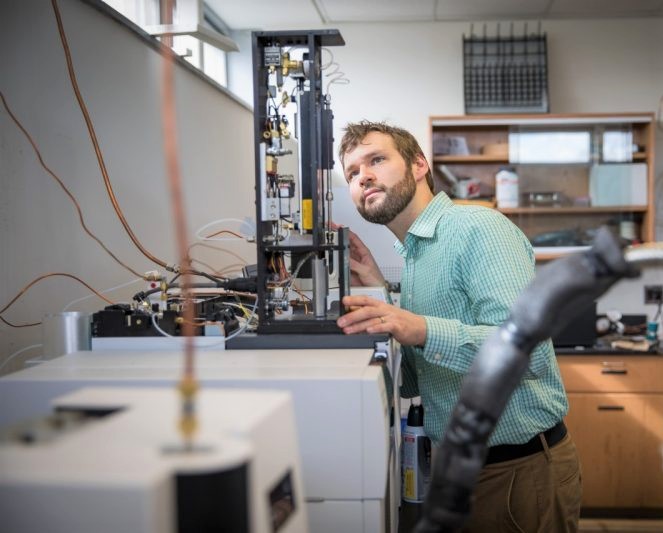By Courtney Sakry
“The picture we have in our mind of air pollution is black smoke billowing out of a smokestack or tailpipe,” said Gabriel Isaacman-VanWertz, assistant professor of civil and environmental engineering. “But the truth is that it is much more complicated.”
The atmosphere behaves like a giant chemical reactor driven by the sun, Isaacman-VanWertz said, and major air pollutants like ozone and particulate matter are mostly products of this chemistry. Gases emitted from natural sources mix with emissions from human activities and “cook” in the atmosphere. Precipitation has the potential to wash out these gases before the chemistry produces ozone and particulate matter, but the process is not yet well understood, he said.
Isaacman-VanWertz received a National Science Foundation award and a Department of Energy grant to quantify the removal of those gases from the atmosphere, better understand how quickly this process occurs, and estimate its impacts on concentrations of air pollution around the globe. “We hope this will lead to improved models and better predictions of regional air quality,” he said.
Isaacman-VanWertz has been studying the way the atmosphere interacts with organic compounds for several years. In 2018, he was the lead scientist on a study published in Nature Chemistry that established a method of tracking reactions between air and carbon-based compounds. This was the first time this had been done by researchers and aimed to study pollution, smog, and haze in a way that was backed by data depicting a compound’s behavior over time.
However, this project led him to wonder whether processes that couldn’t be easily captured in the lab, like rain-out from precipitation, happened fast enough or often enough to interrupt the sun-driven chemistry and reduce the amount of air pollution formed. He found that there was not much data on it so he envisioned a project to fill that gap by measuring the washing-out of gases in real-world and laboratory-generated rain storms.
Isaacman-VanWertz will measure concentrations of the reactive organic gases at an established forested field site and in Blacksburg that account for most of the reactivity of the atmosphere and have the most potential for aerosol formation. He will also build a chamber to simulate rain events and measure how they wash out gases.
Using data from the Department of Energy Atmospheric Radiation Measurement network, he will estimate how fast these gases get washed out around the globe and model how this process affects the formation of pollution.
He hopes the research will contribute to scientific understanding across a range of disciplines, from ecology to public health to climatology. Furthermore, the goal is to translate the core scientific issues into a variety of materials to engage with the public.
“I hope this project will help the public develop a new picture of air pollution in their mind closer to reality, of gases and particles cooking together in the atmosphere,” Isaacman-VanWertz said.





